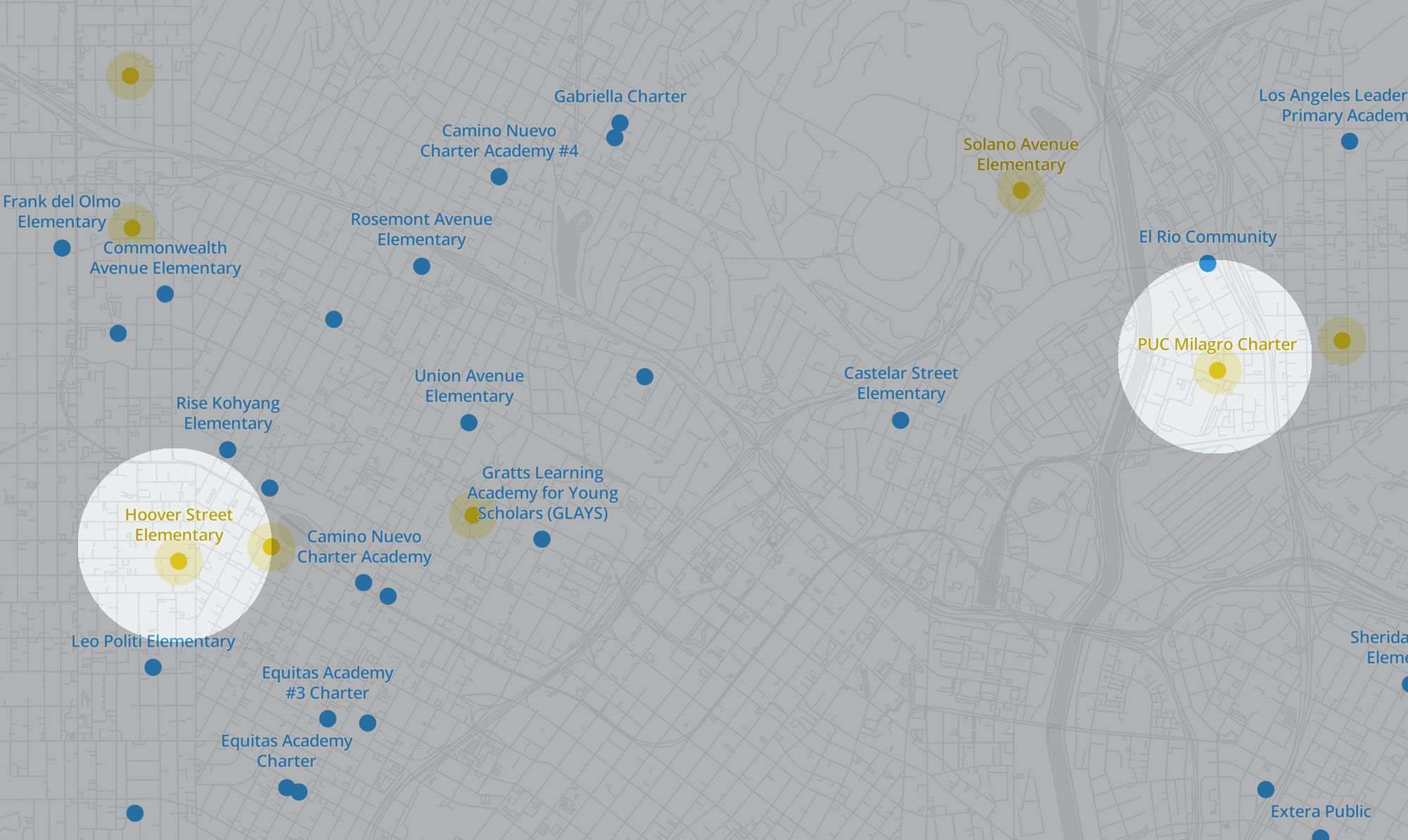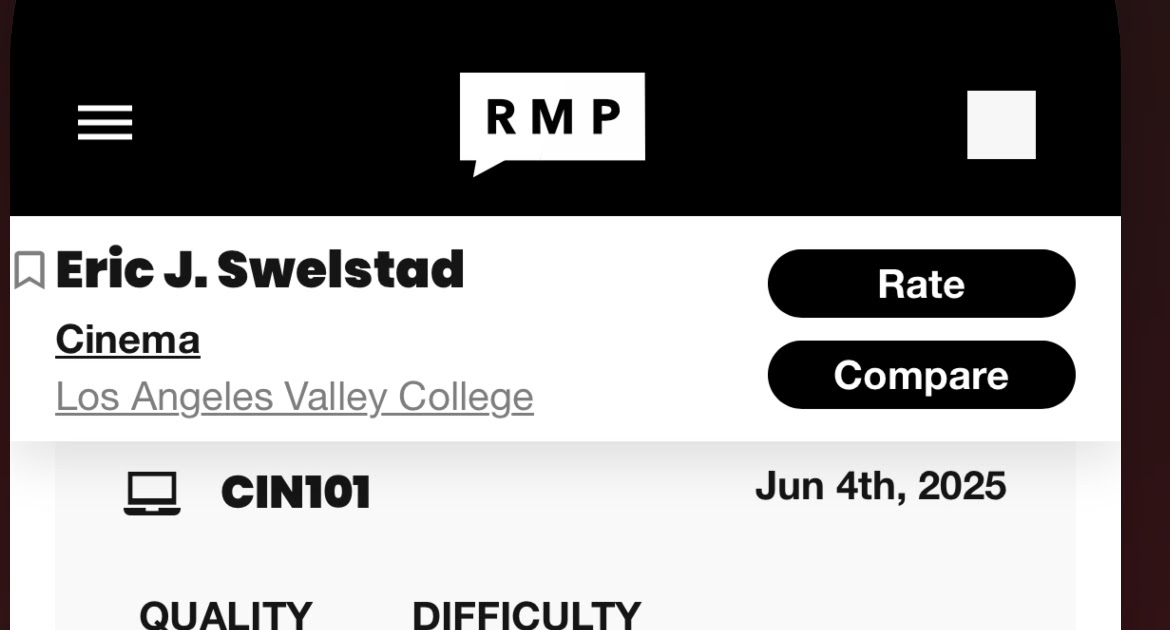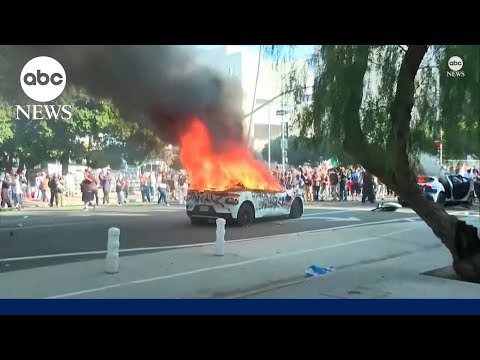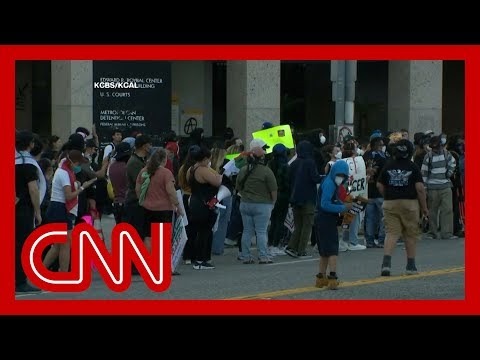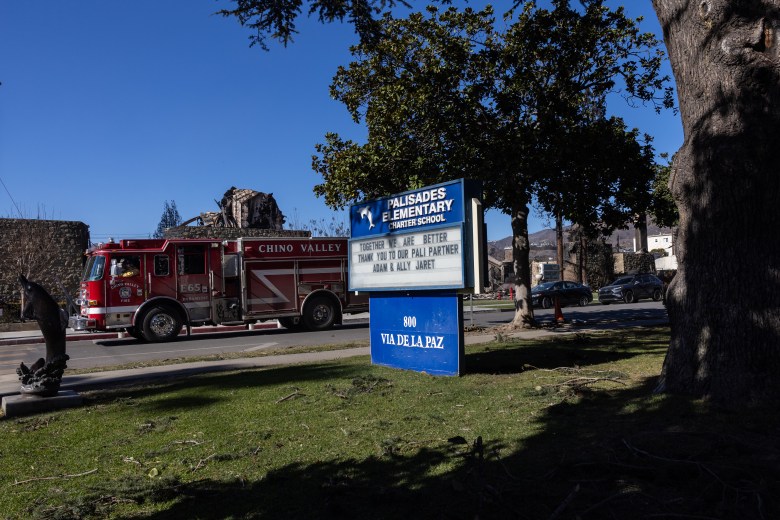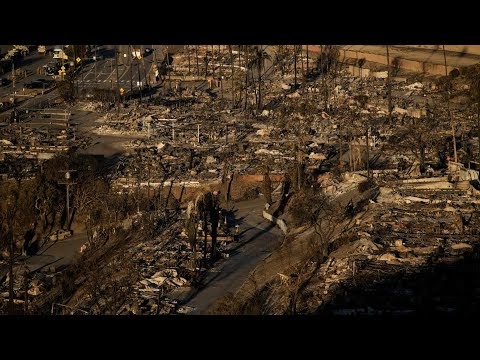[Editor’s note: The first installment of Corruption, Fraud and Scandal at Los Angeles Community College District is here.]
“HR has been weaponized against our faculty for speaking out and complaining about
discrimination.” This was a public comment made by Los Angeles Community College District
Academic Senate President Angela Echeverri at the March 2025 Meeting of the LACCD Board
of Trustees.
Echeverri’s remarks were not isolated either and were echoed by Deborah Harrington (California
Community Colleges’ Success Network Executive Director), “Our HR leadership is not living up
to the standards that we deserve. Our members remain quite frustrated.” More reporting can be
read in Pierce College student newspaper ‘The RoundUp’ and LACCD Youtube Live-Streamed
meetings.
These accusations come three years after longtime administrator Annie G. Reed (Annie Goldman
Reed) left her position as Omsbudsman/Associate Dean of Students at Los Angeles Valley
College was promoted to Interim Dean of Employee and Labor Relations collecting an annual
salary of $284,935.00 in pay and benefits in 2022 according to Transparent California last year of
reporting.
A survey of public records including news articles, lawsuits, accreditation complaints, and emails
to show that Annie G. Reed has a long history of this sort of behavior across multiple LACCD
campuses – going back to the 2000s.
In an October 27, 2010 article ‘Grade Grievances Give Students Voice’ by Lucas Thompson in
‘The Los Angeles Valley Star’ Annie G. Reed is quoted as cautioning students against using their
rights to challenge unfair grades stating, “It’s worthwhile if a student really thinks they have the
proof to forward with the process . . . It’s their right to, [but] we don’t encourage frivolous
[cases], because that’s a waste of college resources.”
The article further quoted disgraced ex-College President Sue Carleo who left the institution in
2013, with the College finances in the red and on Warning Status with the Accreditation
Commission of Junior and Community Colleges. Carleo warned that students should simply
view mis-grading as “Human Error.” (https://archive.org/details/cavgchm_002210/mode/2up?
q=Annie+Reed+LAVC)
When the ACJCC placed Los Angeles Valley College on Accreditation Warning it cited multiple
standards violations and specifically;
College Recommendation 5:
To fully meet the Standards, the college should ensure that records of complaints are
routinely maintained as required by the Policy on Student and Public Complaints Against
Institutions
(Standards II.B.2, II.B.2.c, II.B.3.a, II.B.4)
This came after Annie G. Reed failed to have student records or complaints available for
inspection to the visiting Accreditation Team.
Three years later Reed was again in hot water when a student filed an Accreditation Complaint in
June 2016, specifically documenting multiple faculty members in the Los Angeles Valley
College Media Arts Department engaging in fraud and deceptive practices – supported by sixty
pages of documentation.
The complaint further stated that Reed refused to facilitate student complaints as was her role
and threatened action for ‘disrupting the peace of the campus’ by making complaints. This was
followed by a second accreditation complaint by another student regarding the same issues and a
student Facebook Group discussing issues.
Reed’s response was to suspend the first student running a smear campaign that he was potential
active shooter citing the complaints he brought, suspend a thirty-year old single mother in the
Facebook Group for Academic dishonesty after she forgot to have a college transcript from when
she was eighteen-years old sent to LAVC, and then threatened the second student who brought an
Accreditation Complaint for vandalizing school property.
[Below: Text exchange between LACCD students alleging that administrator Annie Reed created a smear campaign against them.]
Student 1 was suspended for a year (though not expelled by the Board of Trustees after
investigation) a semester short of graduating. Student 1 would have earned six associate degrees
and eight occupational certificates. Student 2, was ordered to pay a substantial amount of
financial aid back to the college as “restitution.” Several months later, she was subjected to a
reversal of hours by LAVC Grant Director Dan Watanabe in the Media Arts Department, for a
campus job she worked and ordered to pay back several thousand dollars. Student 3 ended up
going to Los Angeles City College to take final classes needed to graduate and was nearly
refused graduation by Department Chair Eric Swelstad.
These actions also happened right before and after LAVC Media Arts Faculty Eric Swelstad,
Chad Sustin, Adrian Castillo, Dan Watanabe, and LAVC President Erika Endrijonas lobbied the
LACCD Board of Trustees to approve construction of a new Media Arts Building that was later
reported by The Los Angeles Times to be a massive racketeering scheme – Aug 4, 2022, Teresa
Watanabe, ‘Corruption and fraud beset long-delayed L.A. Valley college theater project, lawsuit
alleges.’ (https://www.latimes.com/california/story/2022-08-04/corruption-alleged-in-long
delayed-la-valley-college-theater-project)
These actions mirrored the treatment of a student who sued LAVC’s Media Arts Department in
2009, alleging the same type of fraud and misconduct by nearly all the same Department Faculty.
Enrique Caraveo vs Los Angeles Valley College, Eric Swelstad, Joseph D’Accurso, Arantxia
Rodriguez, Dennis J. Reed among others. Filing Date: 05/18/2009 (https://unicourt.com/case/ca
la2-enrique-caraveo-vs-los-angeles-valley-college-et-al-621337)
In that case, Caraveo stated:
46. When plaintiff complained about the above referenced matters, Swelstad and other Valley
College officials retaliated against plaintiff by refusing to grant him a Certificate and creating a
hostile learning environment for him in class.
47. On or around June 2007 plaintiff satisfied the requirements to get a Cinema Arts Production
Certificate (“Certificate”) at Valley College.
54. On or about October 2008, Swelstad denied plaintiff the certificate via a letter even though
plaintiff has fulfilled the requirements to get the Certificate.
55. On or about October 13, 2008, plaintiff notified Delahoussaye and Reed that plaintiff had
fulfilled all requirements for the Certificate and that they should take care of the matter as soon
as possible. On or about October 13, 2008, Yasmin Delahoussaye and Dennis Reed denied
request.”
Dennis Reed, was at the time the Dean over the Media Arts Department and the husband of
Annie G. Reed. Dennis Reed was later profiled in LAist Magazine on April 27, 2016 article ‘Jerk
Driver Who Ran Cyclists Off Glendale Road Charged With Assault, Lying To Police’ (https://
laist.com/news/justice-delivered-almost)
More to the point – Dennis Reed also oversaw a grant program at Los Angeles Valley College
Media Arts Department known as IDEAS – Institute for Developing Entertainment Arts and
Studies at LAVC. The Grant was run by Dan Watanabe. (https://archive.org/details/
cavgchm_002241/mode/2up?q=Annie+Reed+LAVC)
Watanabe was also named in the Accreditation Complaint for Wage Theft, Improper use of funds
and fraud in the successor grant ICT Doing What Matters, due to the college receiving Grant
Money but immediately eliminating the curriculum the grant application said they would provide
and like Caraveo’s complaint not providing in class training or labs. The complaints to
Accreditation and the LACCD Personnel Commission by students also questioned the legitimacy
of a number of professional experts, including Robert Reber – who was listed as both a ‘student
worker’ and ‘professional expert’ in 2008. Student 1 further provided evidence to both that Dan
Watanabe had asked him to falsify his resume claiming fictitious jobs and cited an employee in
the LAVC Payroll office as being behind it (that employee immediately denied it and Student 1
refused).
Dennis Reed had also spent years lobbying for the approval of the VACC building –
unsuccessfully.
In short, Annie G. Reed’s retaliation and cover-up in 2016, may have been to help realize her
husband’s failed building project as well as preemptively shutdown any investigations or audits
that might trigger further scrutiny regarding how the IDEAS Grant was administered under his
time as area Dean.
Reed’s behavior of covering up abusive behavior towards members of the LACCD Community
was also not limited to retaliation against students.
In 2017, then LACCD Board President Andra Hoffman accused former Board President Scott
Svonkin of abusive behavior and demanded sanctions. According to an article in the Los Angeles
Daily News, ‘LA Community College board postpones sanction hearing vote against former
4
president’ August 28, 2017, Annie G. Reed again inserted herself into the matter to cover-up for
Svonkin.
“The allegations do not strike me as related to governing and seem best suited for mediation,”
said Annie Reed, a district employee for 22 years and a representative of Teamsters Local 911. “I
don’t ever recall a time, or a place, where he has treated his colleagues poorly.”
Others disagreed, including two former women board members who did not speak at the
downtown meeting.
They said Hoffman’s critics — who they said weren’t present during the abuse — had a tendency
to blame the victim, while ignoring Svonkin’s allegedly brusque treatment of employees.”
(https://www.dailynews.com/2017/07/13/la-community-college-board-postpones-sanction
hearing-vote-against-former-president/)
Her behavior is further documented in a series of lawsuits against the LACCD District.
Filed October 03, 2024 Dr. Christiana Baskaran (Plaintiff), Linda Silva; Dr. Ruth Dela Cruz,
Dr. Adriana Portugal, vs LACCD (including defendant Annie Reed). (https://trellis.law/doc/
219882998/complaint-filed-by-dr-christiana-baskaran-plaintiff-linda-silva-plaintiff-dr-ruth-dela
cruz-plaintiff-et-al-as-to-los-angeles-community-college-district-defendant-board-trustees-los
angeles-community-college-district-defendant-los-angeles-c)
“[other defendants] Annie Reed to discriminate against female faculty and staff, refused to
investigate immediately or to take preventative action. Then Defendants and EMPLOYER
DEFENDANTS retaliated against PLAINTIFFS and others to try and prevent them from
complaining to authorities. When PLAINTIFFS opposed these illegal practices, they continued
to retaliate against them.”
24. As set forth herein, ALL Defendants were officers, agents. Defendants and directly or
indirectly used or attempt to use their official authority or influence for the purpose of
intimidating, threatening, coercing, commanding, or attempting to intimidate, threaten, coerce, or
command PLAINTIFF and others for the purpose of interfering with the right of that person to
disclose to an official agent matters within the scope of this article. EMPLOYER
DEFENDANTS aided and abetted MARY GALLAGHER, ARMANDO RIVERA-FIGUEROA,
ANN HAMILTON, JAMES LANCASTER, JOCELYN SIMPSON, JIM LANCASTER, ANNIE
REED and Victoria Friedman District Complaince Officer, Genie-Sarceda-Magruder Interim
Director Office for Diversity, Equity and Inclusion, Rick Von Kolen to violate this statute.
28. . . .Dr Hamilton admitted to other illegal activity such as planting drugs on employees to
destroy their reputation and get them fired. Dr Silva filed a grievance against Dean Hamilton to
try and get her to stop the illegal activity, the union did nothing.
32. Ms. Silva complained to Human Resources filed a title IX complaint, made a report to the
police and was retaliated against.
Filed October 19, 2023 Sara Adams, An Individual VS California Institute of Technology,
California Corporation. (https://trellis.law/case/23stcv25556/sara-adams-an-individual-vs
california-institute-technology-california-corporation)
“21. On April 7, 2023, Mr. Wu continued to report the pay disparity to Annie Reed, Upon
information and belief, Annie Reed is Caltech’s Employee and Organizational Development
Consultant (Human Resources Department).
22. Annie Reed spoke about the report of pay disparity to Ofelia Velazquez-Perez, Caltech’s
Senior Director, Total Rewards and Director of Employee and Organizational Development
(Employee Relations).”
Filed March 08, 2021, Mitra Hoshiar, an individual, Plaintiff, v. Los Angeles Community
College District, (https://trellis.law/case/21stcv08950/mitra-hoshiar-vs-los-angeles-community
college-district-an-unknown-entity)
“28. On December 3, 2015, PLAINTIFF then filed a discrimination complaint against Sheri
Berger (“Berger”), VP of Academic Affairs, and Fernando Oleas (“Oleas”), Pierce Union
President. During PLAINTIFF meeting with Dean Barbara Anderson (“Anderson”) at
Anderson’s office on June 10, 2015, Berger and Oleas stopped by and started making remarks of
PLAINTIFF’s accent for reading the graduates’ names on the ceremony with a non-American
accent.
29. Thereafter, On December 11, 2015, in meeting with Dean Annie Reed in conjunction with the
non-collegiality investigation Walsh, Union Grievance Rep and Oleas stopped by at
PLAINTIFF’s office in order to prevent PLAINTIFF from Union Representation. They made
PLAINTIFF to Barbara Anderson, whom was PLANTIFF’s chosen union rep and request for
Anderson to not join the meeting because Walsh and Oleas had to choose who could be the union
representation in the meeting.
30. Based on what had transpired on December 11, 2015, on December 14, 2015, Plaintiff filed a
Whistleblower/Retaliation Complaint at the District’s Complaint at the District’s Compliance
Office against Walsh, Oleas, and McKeever (department and union delegate), and other members
of her department. No action was taken by the Compliance Office.
Annie G. Reed’s, current interim Dean of Labor and Employee Relations, has been involved in
covering up wrongdoing in the Los Angeles Community College District for decades. Her targets
have involved employees, students, faculty, and even a trustee. And so far has never been held
accountable.
Multiple stories were published on newswire IndyBay, the news outlet branch of the San
Francisco Bay Area Independent Media Center between 2023 and 2024. They were then
scrubbed (along with other stories) over the weekend of May 18, 2025.
Recently, newly appointed Chancellor, Dr. Alberto J. Roman has been alerted to Ms. Reed’s
disturbing history – it remains to be seen whether he will take corrective action, or continue to
6
keep around the same problematic individuals that resulted in his predecessor’s resignation after
a vote of no-confidence by the LACCD Academic Senate.
(To be continued…)
